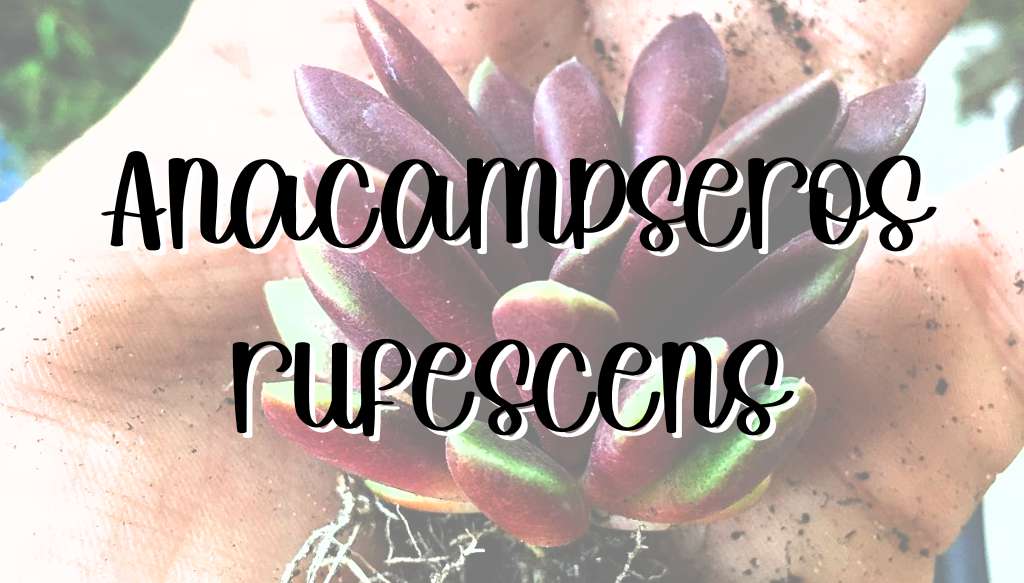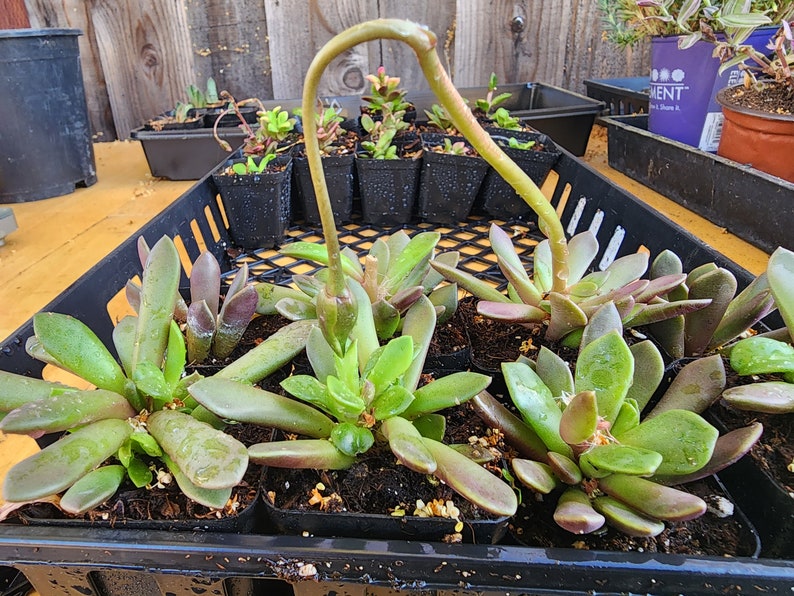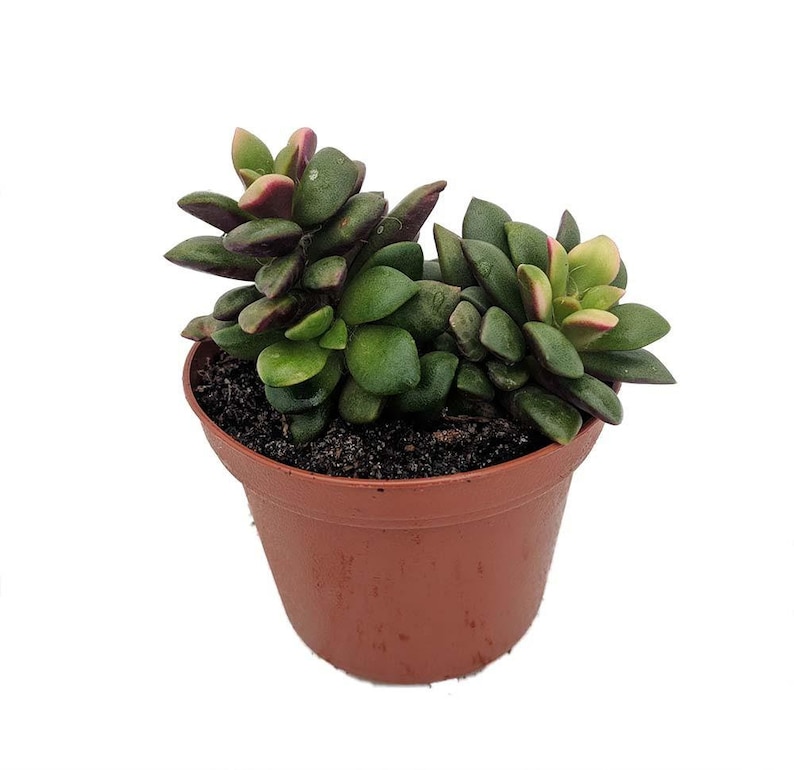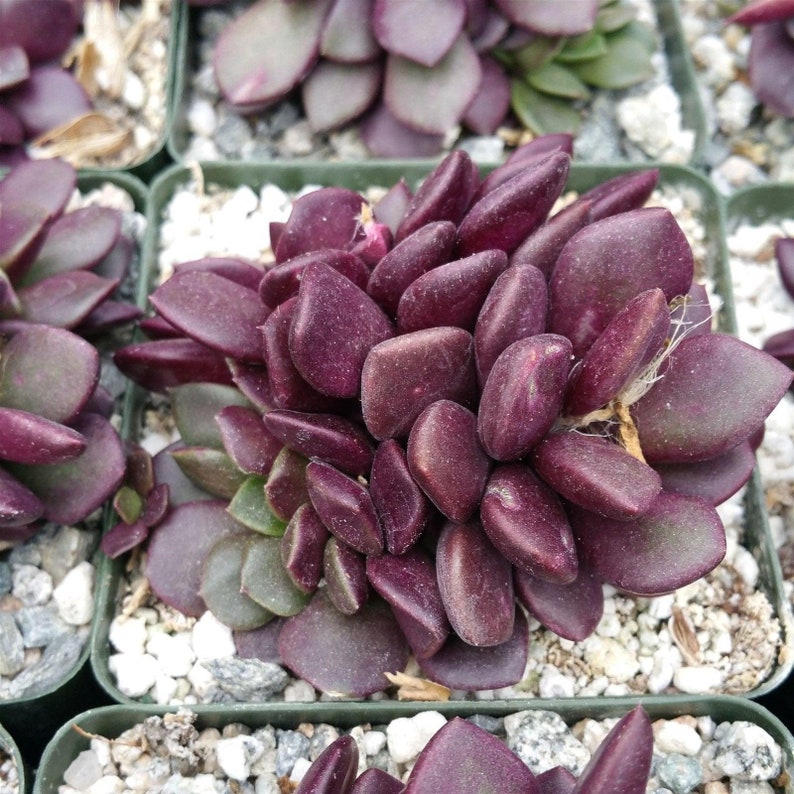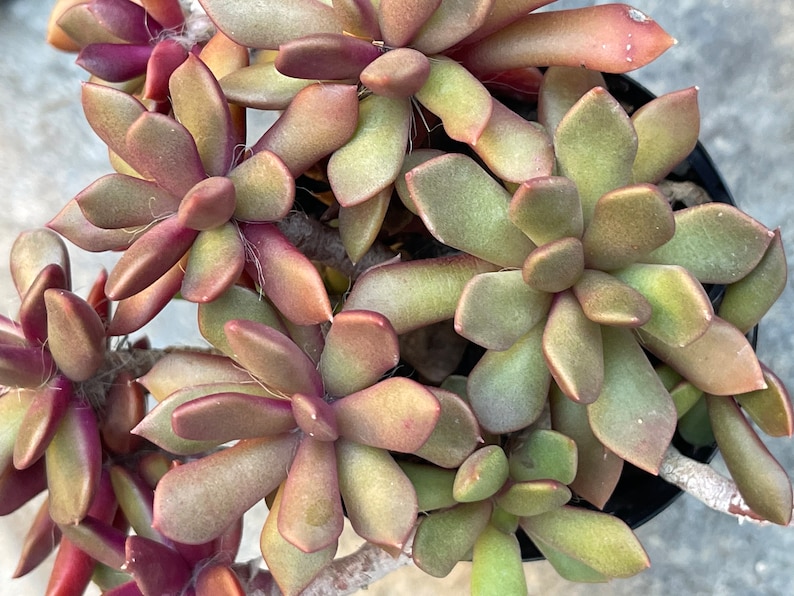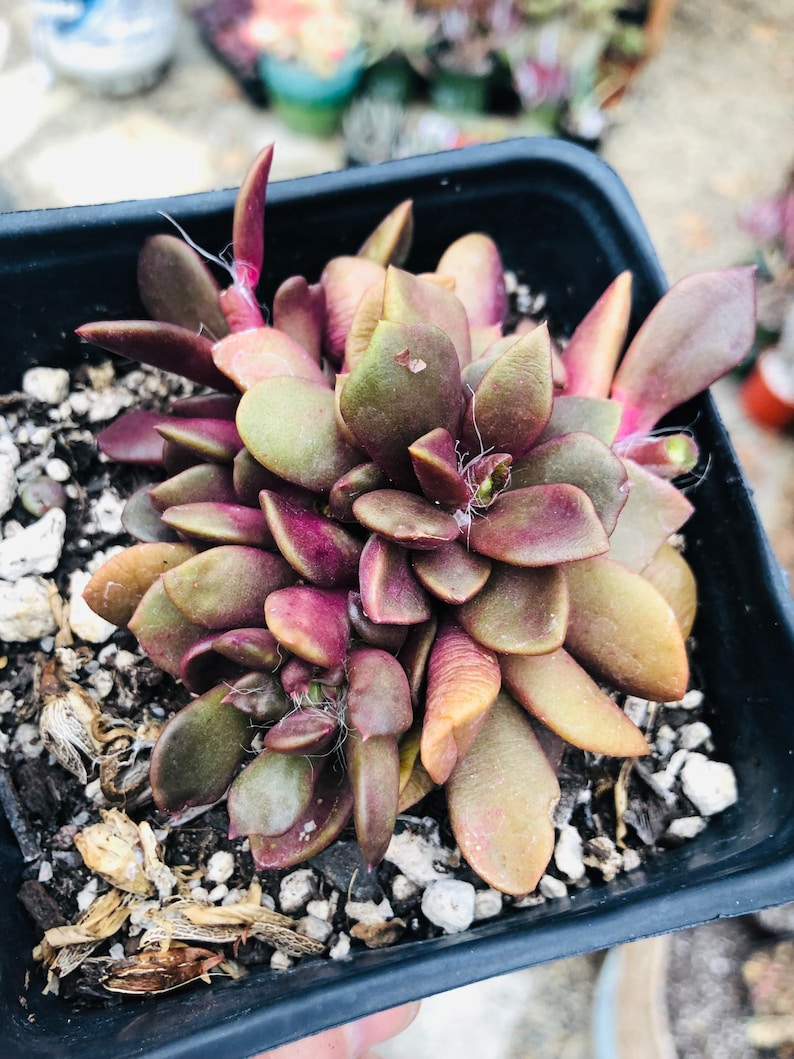Anacampseros rufescens, also known as the “Sand Rose” or “Blushing Anacampseros,” is a beautiful, low-maintenance succulent that is native to South Africa. With its striking red-tipped leaves and small, delicate flowers, it’s a great addition to any succulent collection. In this guide, we’ll cover everything you need to know to care for this stunning plant, from its appearance and growth habits to its care requirements and potential problems.
Dig in!
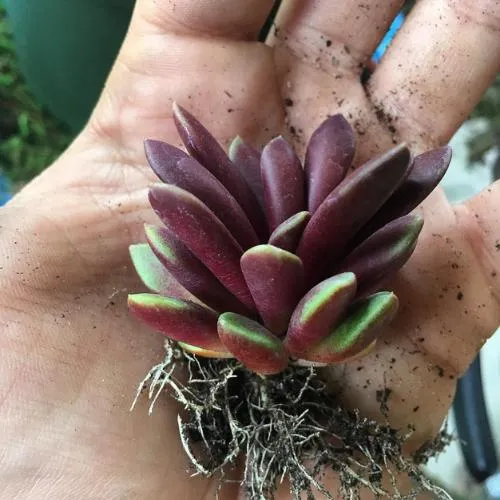
Appearance and Growth Habits
What does the plant look like, and how big will it grow?
Anacampseros rufescens is a small, compact succulent that grows to be about 6-8 inches (15-20 cm) tall and 8-12 inches (20-30 cm) wide. It has thick, fleshy leaves that are a vibrant green color with red tips, giving it a distinctive, bicolored appearance. The leaves are also covered in fine, white hairs, which give the plant a soft, velvety texture.
What color are its flowers, when should it bloom?
Anacampseros rufescens produces small, delicate flowers that are a pale yellow color with red stamens. They appear in the spring and summer months, blooming from May to July in the Northern Hemisphere. The flowers are bell-shaped and can grow up to 1 inch (2.5 cm) in diameter. They are also self-fertile, meaning they don’t require a separate pollinator to produce seeds.
Anacampseros rufescens Care Requirements
How much light does Anacampseros rufescens need?
It prefers bright, indirect light but can tolerate some direct sunlight. Placing it near a south-facing window is ideal. However, avoid placing it in direct sunlight for extended periods, as this can cause the leaves to become scorched and discolored.
How often do you water it?
Water the plant sparingly, allowing the soil to dry out completely between waterings. Overwatering is the most common cause of death in this succulent, so it’s important to be cautious. Watering once a week in the summer months and once every two weeks in the winter months should be sufficient.
What is the best kind of soil for Anacampseros rufescens?
Use a well-draining cactus and succulent potting mix to ensure that the plant’s roots don’t rot. This type of soil is designed to provide good drainage, which is essential for succulents like Anacampseros rufescens.

Consider amending your soil with Bonsai Jack’s gritty mix to ensure your succulent soil drains quickly to prevent it from staying moist for too long. Source: Etsy
What is the minimum temperature the plant can tolerate?
Anacampseros rufescens can tolerate temperatures as low as 55°F (13°C) at night. However, it prefers warmer temperatures between 65-75°F (18-24°C) during the day. Avoid placing the plant in areas with drafts or extreme temperatures.
What is the ideal USDA hardiness zone for growing it outdoors?
Anacampseros rufescens is a tender succulent and cannot tolerate frost. It is best suited for USDA hardiness zones 9-11, where the winter temperatures are mild and there is little to no frost.
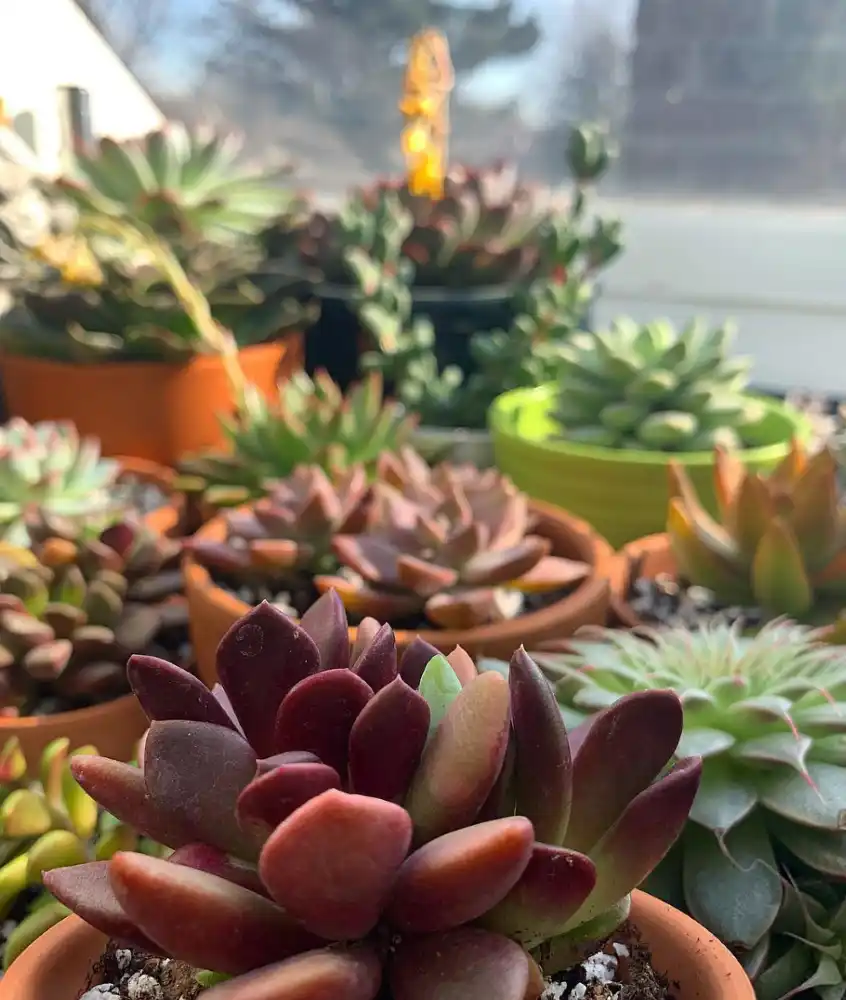
What is the best fertilizer for Anacampseros rufescens and how often should you feed it?
Feed the plant during the growing season (spring and summer) with a balanced, water-soluble fertilizer. Dilute the fertilizer to half the recommended strength to avoid burning the roots. Avoid fertilizing during the winter months when the plant is dormant.

Succulent fertilizer available to purchase on Etsy.
What is the easiest way to propagate the plant?
Anacampseros rufescens can be easily propagated by separating the offsets that form around the base of the plant. Allow the offsets to dry for a few days to form a callus, and then plant them in well-draining soil. Water sparingly until the new plants are established.
What kind of pests does it attract and what is the best way to get rid of them?
Anacampseros rufescens can be susceptible to pests such as mealybugs, spider mites, and scale. Check the plant regularly for any signs of infestation. Isolate the affected plant, and treat it with insecticidal soap or neem oil according to the product’s instructions.
As an Amazon Associate I earn from qualifying purchases at no additional cost to you.
Fix the pest problem on your succulents and cacti with these popular insecticides.
What are common problems people have with the plant and how do you fix them?
Some common problems with Anacampseros rufescens include overwatering, underwatering, and exposure to extreme temperatures. Adjust the watering and care schedule according to the plant’s needs, and avoid placing it in areas with drafts or extreme temperatures.
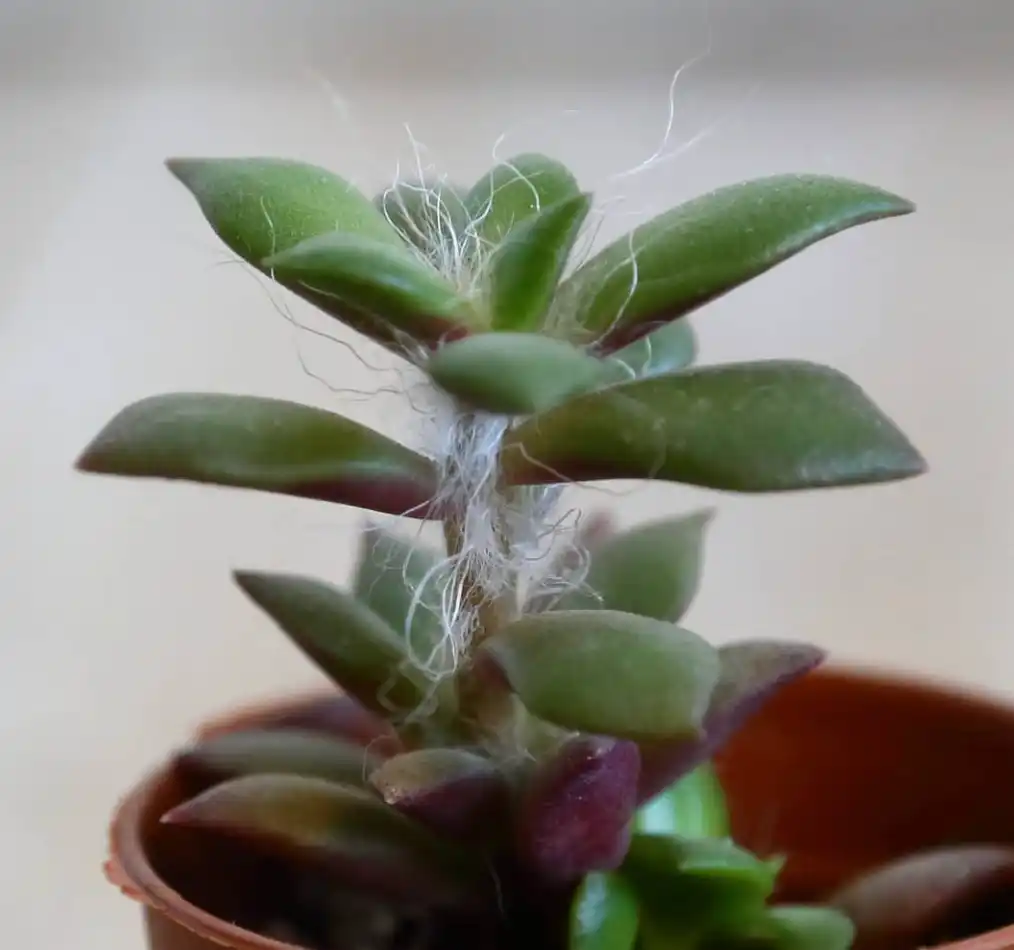
What is the best way to grow Anacampseros rufescens indoors?
Anacampseros rufescens can be grown indoors in a bright, sunny location. Use a potting mix specifically designed for cacti and succulents, and water sparingly. Keep the plant away from drafts and extreme temperatures.
Is Anacampseros rufescens toxic to cats, dogs, or people?
Anacampseros rufescens is non-toxic to cats, dogs, and people. However, it is always a good idea to keep succulents out of reach of pets and children to avoid any potential harm.
Does the plant have any special, unique adaptations that make it different from other succulents or help it survive in a very specific environment?
Anacampseros rufescens has a unique adaptation that allows it to survive in dry environments. It has a thick, fleshy stem that can store water, allowing the plant to survive for extended periods without rain.
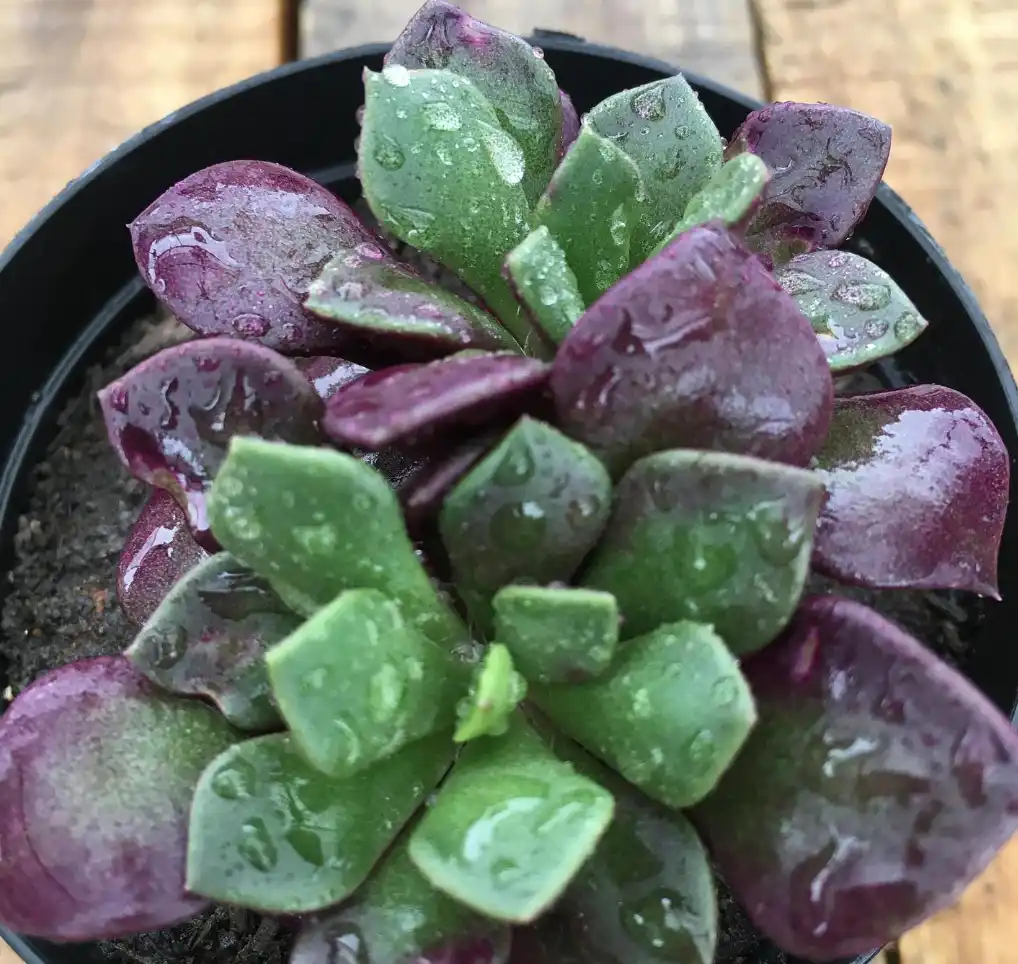
How often does Anacampseros rufescens need to be repotted?
Anacampseros rufescens typically needs to be repotted every 2-3 years as it outgrows its pot. Choose a pot that is only slightly larger than the previous one, and use a well-draining cactus and succulent potting mix.
When you’re rooting or transplanting your succulents and cacti, use SUPERthrive to help reduce the chance of transplant shock and grow a strong root system.
When and how should you prune it?
Pruning Anacampseros rufescens is not necessary, but it can be done to maintain shape and encourage new growth. Remove any dead or damaged leaves, and cut back overgrown stems to promote branching.
Anacampseros rufescens is a beautiful, low-maintenance succulent that is perfect for any succulent lover. With proper care and attention, it can thrive and provide a touch of unique beauty to any space. By following the care tips outlined in this guide, you can help your Anacampseros rufescens live a long and healthy life.

